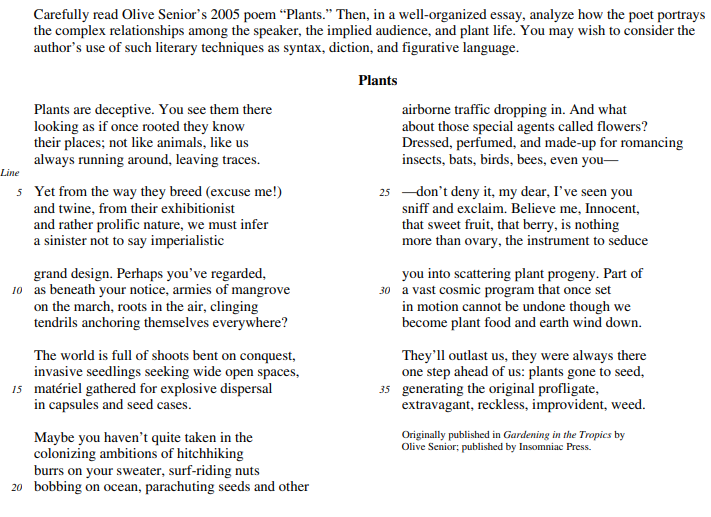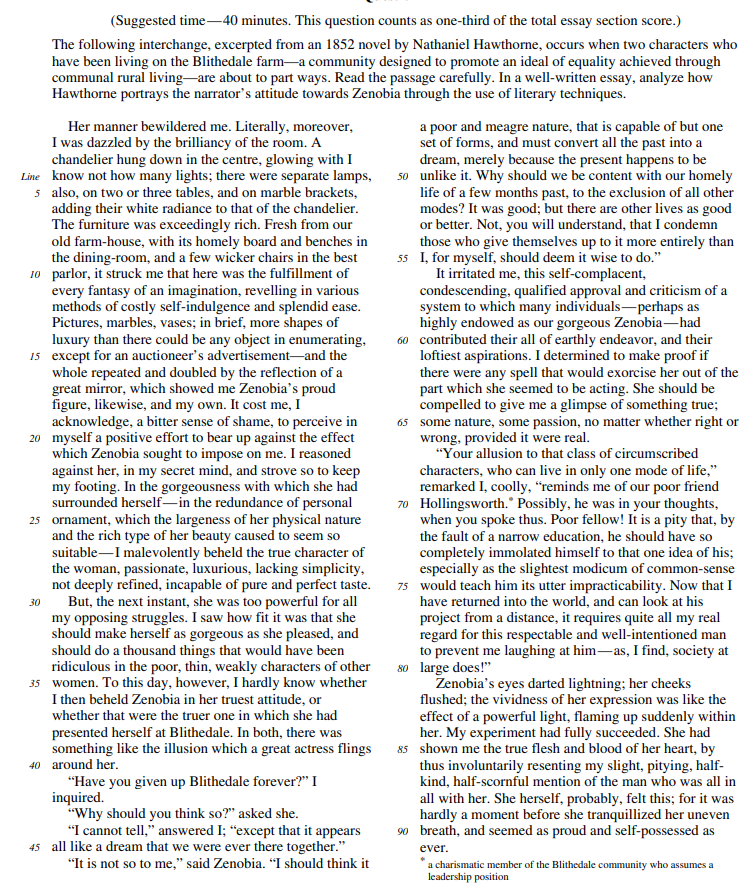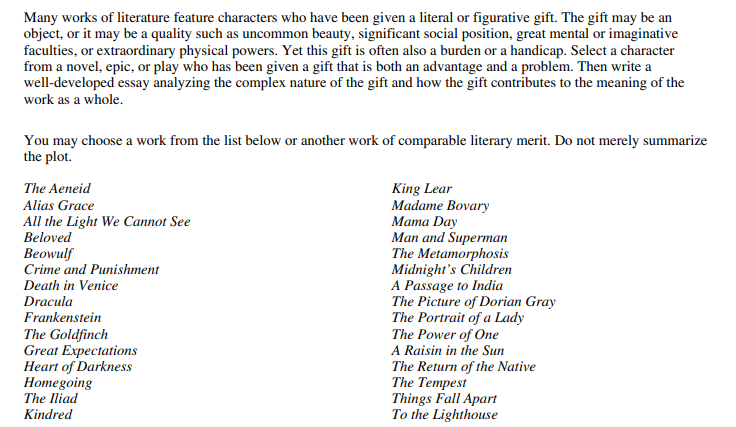20 Best AP Lit Books & Plays You Need to Read
If you’re planning to take the AP English Literature and Composition exam, one of the best things you can do to prepare is to simply hit the books. Since the whole exam is about reading and interpreting literature, it only makes sense that reading will help you sharpen the skills you’ll need to ace the exam. In this post, we’ll go over three concepts to guide your reading as you prepare for the AP Lit exam, plus 20 awesome book recommendations.
How Reading Can Improve Your AP Lit Score
Reading a broad range of texts will help familiarize you with the works on the AP Lit exam, which come from a wide variety of genres and time periods. Beyond that, you’ll be able to practice your analytical reading skills, looking out for the themes and concepts commonly tested on the AP exam (which we’ll discuss later in this post).
More specifically, reading will also help prepare you for the third free response question on the exam, which asks you to discuss a certain theme in a work of your choice. The question provides a list of works, but you’re always welcome to choose another piece of similar “literary merit” (which we’ll also discuss later). So, you’ll want to read a selection of quality works to be able to write a strong response to a wide range of themes.
Here’s an example of this kind of free response question:
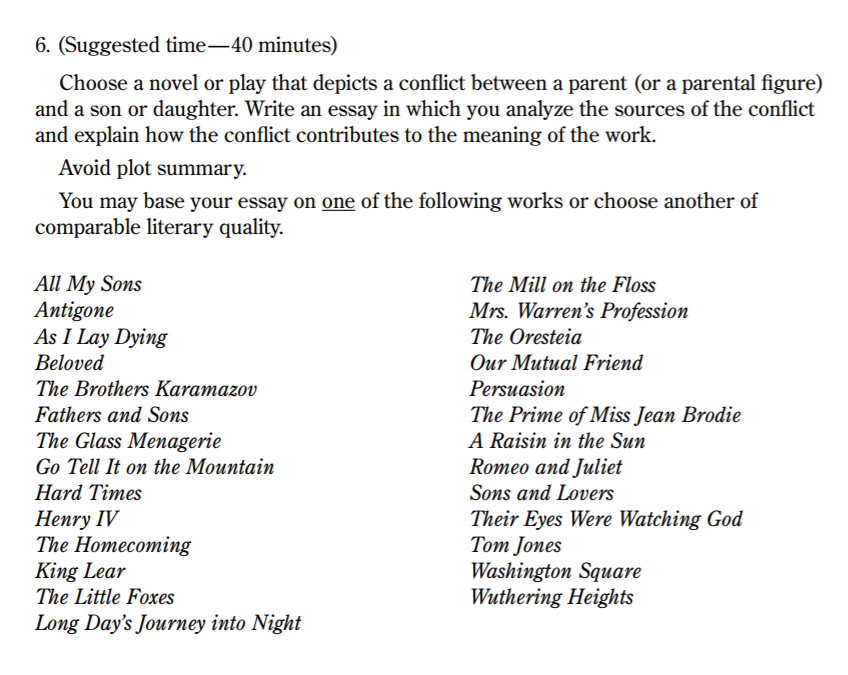
What is “Literary Merit”?
The College Board doesn’t have an official recommended list of books to read for AP Lit. Anything goes, as long as it’s English literature of “literary merit.” So, what is “literary merit”? What kinds of works count? According to the College Board, these characteristics constitute a work of literary merit:
- Entertains the reader and is interesting to read.
- Does not merely conform to the expectations of a single genre or formula
- Has been judged to have artistic quality by the literary community (teachers, students, librarians, critics, other writers, the reading public)
- Has stood the test of time in some way, regardless of the date of publication
- Shows thematic depth: The themes merit revisiting and study because they are complex and nuanced.
- Demonstrates innovation in style, voice, structure, characterization, plot and/or description.
- May have a social, political or ideological impact on society during the lifetime of the author or afterward.
- Does not fall into the traps of “pulp” fiction such as clichéd or derivative descriptions and plot devices, or sentimentality rather than “earned” emotion.
- Is intended by the author to communicate in an artistic manner.
- Is universal in its appeal (i.e., the themes and insights are not only accessible to one culture or time period)
What to Look for as You Read AP Lit Books
As you read for AP Lit, be sure to read closely and carefully, as you would on an exam. It’s also important to pay attention to certain commonly tested concepts:
Figurative Language
Authors use literary techniques such as metaphors, similes, personification, and allusions in their writing for numerous reasons, from building imagery to elaborating on complex concepts. A powerful literary technique, figurative language provides the reader with a deeper understanding of a writer’s work and is one of the primary components of the AP English Literature and Composition exam.
When reading in preparation for the AP Lit exam, pay close attention to the figurative language used by the author and how it affects your interpretation of the story, is used to convey information, and makes the text more engaging. Similarly, think about the particular components of figurative language focused on by the AP English Literature and Composition exam.
- Distinguish between the literal and figurative meanings of words and phrases
- The function of specific words and phrases in a text
- The function of symbols in the story
- The function of images and imagery
The function of word choice, imagery, and symbols makes up 10%-13% of the multiple-choice section of the AP English Literature and Composition exam, and was a primary component of the first free-response question on the 2018 exam.
Here are examples of test questions on figurative language:
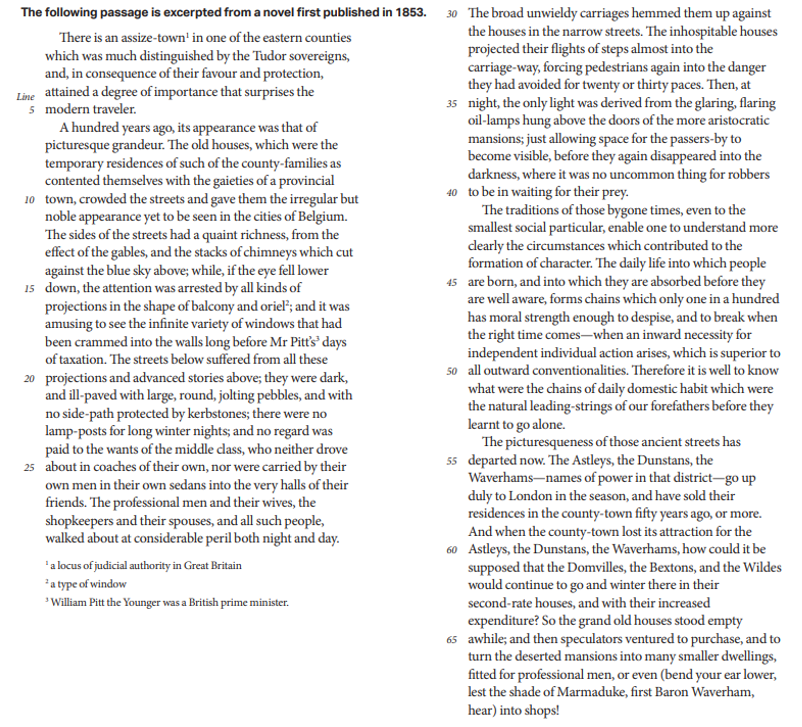

The answer is: A
Narration
The narrator of a story has an enormous influence over a reader’s experience, as they control the details revealed—emphasizing some and limiting others. For example, in Tennessee Williams’ play, The Glass Menagerie (a memory play), Tom the narrator says in his opening monologue, “I give you the truth in the pleasant disguise of illusion.” In other words, the story is told from his perspective, complete with his biases and prejudices.
When reading in preparation for the AP Literature and Composition exam, think about the perspective the story is being told from—first person, second person, limited third person, omniscient author, unreliable narrator, observer narrator—and how this perspective frames the story. Also keep in mind the particular contexts that you’re asked to understand and demonstrate the use of narration by the College Board.
- Identify and describe the narrator or speaker of a text
- The function of the narrator’s point of view
- The narrator’s or speaker’s perspective through details, diction, or syntax
- The reliability of a narrator’s effect on the story
Narration makes up 21%-26% of the AP Lit exam’s multiple-choice section. It’s also likely to play a large role in the free-response questions.
Here are some sample questions:
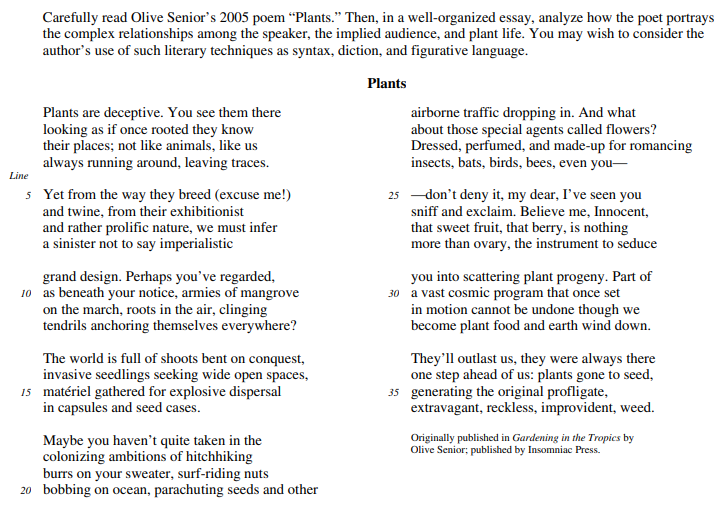

The answer is: D
Character
The word “character” comes from the Latin word meaning “mark, distinctive quality,” and is a literary device used by authors to allow readers to explore a range of values, beliefs, assumptions, biases, and cultural norms. Characters (which are not limited to humans) can be any person, animal, being, or creature that moves the story’s plot line.
Character is an extremely important literary device; without characters, there is no story to tell. You’ll encounter a variety of different types of characters throughout your reading, the two primary forms being protagonists (whom the story revolves around) and antagonists (those who cause conflict for the protagonist). In addition, you’ll often be introduced to a number of different types of minor characters: foil, static, dynamic, flat, and round.
As you prepare for the AP Literature and Composition exam, pay close attention to how the characters interact with each other and the world around them, and what the author is trying to show to the reader through the characters. It’s also a good idea to think about the particular aspects of character the College Board places a focus on.
- What is revealed about a character, their perspective, and motives through textual details
- The function of a character changing, or remaining unchanged
- The function of contrasting characters
- How the nuances and complexities in characters’ relationships are revealed through textual details
- The complexities revealed about a character through their choices, actions, and speech
Character accounts for 16%-20% of the multiple-choice section of the AP Literature and Composition exam, and will likely play a considerable role in the free-response section as well.
Here’s an example:
20 Best Books You Should Read for AP Lit
Here are some works to read to help you prepare for the AP Lit exam, separated by U.S. and Non-U.S. authors, and books vs. plays. These works were selected for their quality and impact.
Books By U.S. Authors
| Title | Author | Year Published | Brief Description |
| The Jungle | Upton Sinclair | 1906 | A fictionalized account of Chicago’s meat-packing industry seen through the eyes of a Lithuanian immigrant, Jurgis Rudkis. |
| A Tree Grows in Brooklyn | Betty Smith | 1943 | A story following Francie Nolan through her formative years growing up in the slums of Williamsburg, New York, at the beginning of the 20th century. |
| Catch-22 | Joseph Heller | 1961 | A satirical antiwar, antigovernment novel set in Italy during World War II that follows bombardier John Yossarian who is desperate to avoid the perilous missions he’s assigned. |
| Beloved | Toni Morrison | 1987 | The story of a black woman named Sethe who, despite escaping slavery in Kentucky and living a free woman in Ohio, remains haunted by the memories of her former life. |
| All the Pretty Horses | Cormac McCarthy | 1992 | The tale of John Grady Cole, the last in a long line of ranchers who sets off on a trip to Mexico with two companions. |
Plays By U.S. Authors
| Title | Author | Year Published | Brief Description |
| The Glass Menagerie | Tennessee Williams | 1944 | A memory play based on the recollections of the protagonist Tom’s memory of his mother and sister, and an evening when Tom brings an acquaintance home for dinner. |
| The Crucible | Arthur Miller | 1953 | Based on real people and events, The Crucible is a portrait of the hysteria created by rumors of women practicing witchcraft in 17th century Salem, Massachusetts, and intended to mirror events happening in Cold War politics. |
| A Raisin in the Sun | Lorraine Hansberry | 1959 | A drama about a working-class black family living on the South Side of Chicago, based on Langston Hughes’ poem Harlem. |
| Who’s Afraid of Virginia Woolf? | Edward Albee | 1962 | A dark comedy focused on a middle-aged couple, George and Martha, and a night of drinking, arguments, insults, and secrets exposed. |
| Angels in America | Tony Kushner | 1991 | Really two full-length plays that explore the sexual, racial, religious, political, and social issues confronting the country during the AIDS epidemic. |
Books By Non-U.S. Authors
| Title | Author | Year Published | Brief Description |
| Madame Bovary | Gustave Flaubert | 1854 | The story of a beautiful and bored wife, Emma Bovary, who’s searching for the excitement found in romance novels and, eventually, adultery. |
| Notes from the Underground | Fyodor Dostoevsky | 1864 | An unnamed narrator’s retreat from society and withdrawal into an underground existence that demonstrates how humans’ free-will often works against their self-interest. |
| Lord Jim | Joseph Conrad | 1900 | The story of a man haunted by the guilt and cowardice of his actions as a young man. |
| Portrait of the Artist as a Young Man | James Joyce | 1916 | A portrayal of the protagonist, Stephen Delalous, as he awakens as an artist—moving from childhood to youth, rebelling against religion, and awakening sexually. |
| One Hundred Years of Solitude | Gabriel Garcia Marquez | 1953 | Spanning a hundred years (1820-1920) and telling the story of the fictional Colombian town Macondoseven and the coinciding rise and fall of the town’s founders, the Buendia family. |
Plays By Non-U.S. Authors
| Title | Author | Year Published | Brief Description |
| Twelfth Night | William Shakespeare | 1623 | The comedic story of twins, each of whom thinks the other has drowned in a shipwreck; a love triangle; and mistaken identity. |
| Tartuffe | Moliere | 1664 | A tale of religious hypocrisy, the main character, Tartuffe, tricks a man with his professed piety while trying to seduce his wife and disinherit his children. |
| A Doll’s House | Henrik Ibsen | 1879 | Centered around the lives of Torvald Helmer, his wife Nora, and their three children who are living an ordinary-seeming life, until Torvald and Nora’s roles are shifted and their lives upended. |
| No Exit | John-Paul Sartre | 1945 | A drama and unforgettable portrait of hell, where three individuals are locked in a room together to torture one another for eternity. |
| Waiting for Godot | Samuel Beckett | 1953 | Two homeless men, Vladimir and Estragon, wait for the arrival of the mysterious Godot. |
For more help with the AP Lit exam, check out our Ultimate Guide to the AP Lit Exam.
Want free college guidance? CollegeVine’s chancing engine uses your grades, test scores, and extracurriculars, along with other factors, to determine which schools might be a great fit for you. We use a data-driven algorithm to develop a school list based on your real admissions chances and preferences. Sign up for your free CollegeVine account to gain access to our chancing engine and other college admissions tools.
